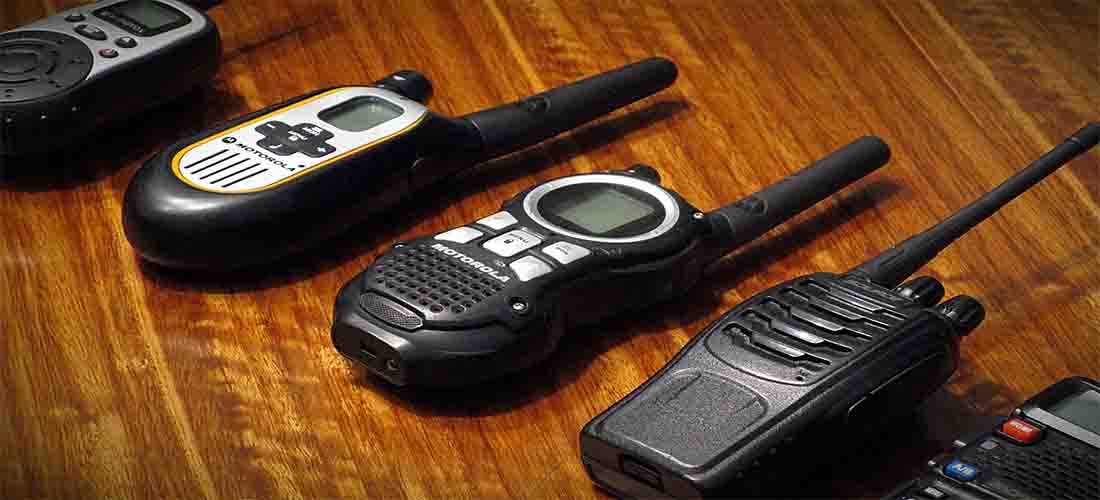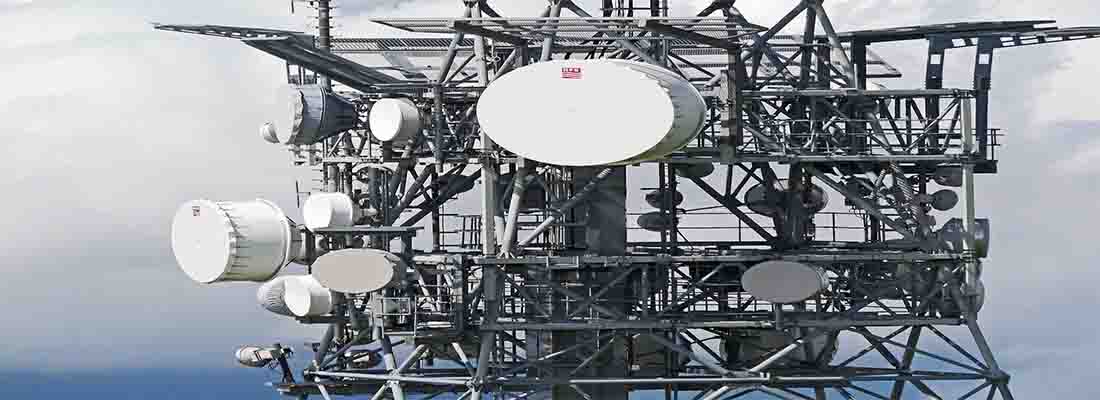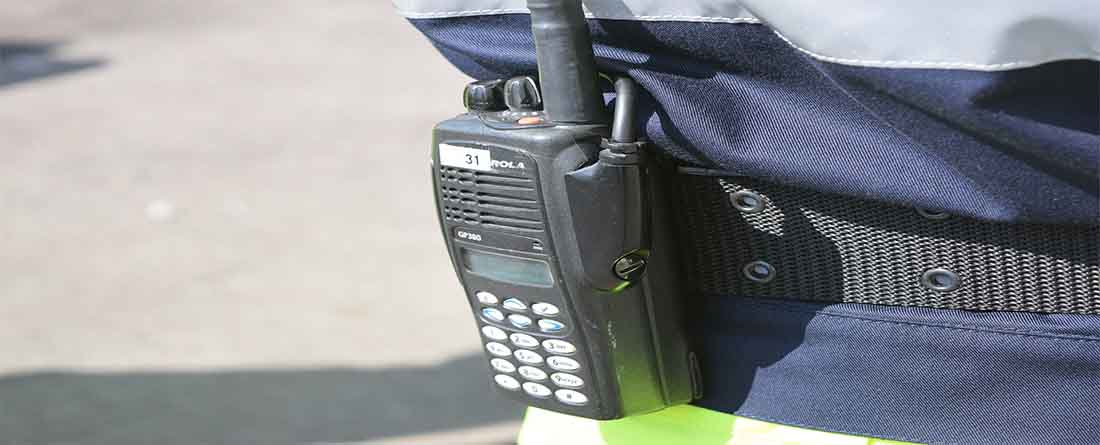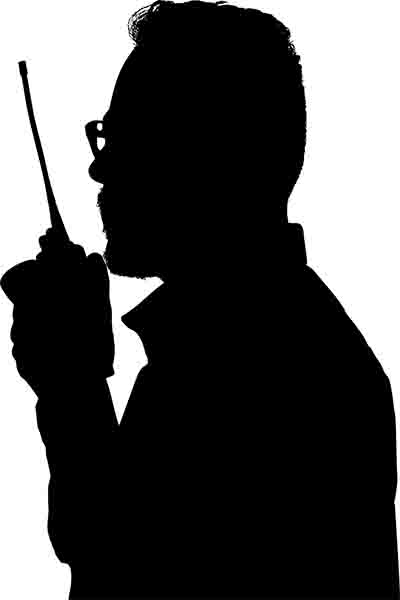Are you a diehard fan of The Walking Dead? How about shooting movies? You have definitely heard at least a few words of the walkie-talkie lingo multiple times. It personally gives me a magnificent feeling imagining myself in that role and using the radio, “eyes on target”, “do you copy?”, ”Roger that!”, “Over and out!” and more…
I am sure you are excited to learn these short language codes as much as I was in the past.
Without further ado, Let’s get started…
What are walkie talkie codes?

Why try the walkie talkie language?
Learning the walkie-talkie language or getting familiar with its codes may sound absurd to most, but you may find yourself in situations where this lingo would come in handy and may even save your life, and not ONLY yours.
This is not something like learning Chinese, it’s a pretty simple and easy-to-understand language that will deliver the message across shortly and clearly.

Unlike mobile phones which use cell phone towers to transmit clear communication, the walkie-talkies use audio waves which do not give a perfectly clear audio quality. That’s why the military, police, or civilians have adopted this short language protocol to send a message in fewer words so that the receiver would clearly understand it.
Psst! Are you interested in our guide about the best airsoft snipers? Have a look here.
Walkie Talkie Lingo and Codes

Now comes the part we are excited about; the lingo.
We divided the walkie talkie language into parts so you can easily grasp it.
1. Starting the Conversation
Starting the conversation is not always easy especially if you are connected with a group of people, you will need to get the right person you want to communicate with, Use these:
- Come in Robert: Are you there Robert?
- Go Ahead: Please speak
- Go for Robert: “Robert” wants to contact me and I’m ready to listen
- Mary Calling Robert: I, Mary, want to talk with Robert
- Robert, Come In: Are you there Robert?
2. Basic walkie talkie lingo for beginners
After learning how to initiate a conversation, now comes the basic lingo:
- Affirmative: Yes
- Negative or Negatory: No
- Go Ahead: I’m all ears
- Disregard: Ignore previous message
- Copy: Understood the message
- Roger or Roger that: Message received and Understood
- Stand by: I’m busy right now, will call you back
- Wilco: Message understood, action will follow
- On it: Doing what you have asked for
Read More: Best Airsoft Sniper Scopes 2022 – 7 Amazing Scopes Reviewed
3. Phrases for unsmooth communication?
You will face communication issues now and then. So instead of shouting “Hello? Can you hear me?” just like we do on phone calls, use the following codes as radio communication is a whole different medium.
- Mic Check or Radio Check: Is my radio working? Used in setting up new radios or checking if the battery has any juice left in it or is it dead.
- Loud and Clear: “Your radio is working fine” or “I can hear you”
- Do You Copy? Can you hear me? Used where the conversation is not clear and the person needs to confirm if his message is delivered or not
- Say Again or Go Again: Retransmit your message. Note that “repeat” can’t be used here because that is used to “fire again” in the military’s artillery units’ conversation.
4. Finishing the conversation
Unlike in a normal conversation where you say “Bye”, “Take care” or “See you later”, you need to use clear words to properly end the radio conversations in a way that the listener would understand.
- Over: “I’m done speaking”, lets your partner know that you have finished talking and waiting for his/her reply or ending the conversation.
- Out: End of transmission
- Over and Out: Means both “I am done speaking” and “End of conversation”
What are Walkie Talkie Codes or Signals:
Following are the short, easy but important walkie talkie codes designed for simple and fast communication. You don’t need to memories ALL but remembering a few important ones could save someone’s life.
- 10-1: “Receiving poorly”, The quickest way to tell your partner that the voice is not clear.
- 10-2: “Receiving well”, means that he’s heard clearly.
- 10-3: Stop transmitting
- 10-4: Message received
- 10-5: Relay message to ***someone’s name***
- 10-6: I am Busy, please stand by
- 10-7: Out of service, leaving the air
- 10-8: In service, subject to call
- 10-9: Repeat the message
- 10-10: Transmission has been completed, standing by
- 10-11: Talking too rapidly
- 10-12: Visitors present
- 10-13: Advice required regarding Weather/Road conditions
- 10-16: “Make pick up at”, used to schedule a pickup.
- 10-17: Something Urgent
- 10-18: Anything for us?
- 10-19: Nothing for you, return to base
- 10-20: My location is ***location name***
- 10-21: Call by telephone
- 10-22: Report in person to ***this person***
- 10-23: Stand by
- 10-24: Last assignment has been completed
- 10-25: Can you contact ***this person***
- 10-26: Disregard/ignore last information
- 10-27: I am moving to channel ***ABC***
- 10-28: Identify your station
- 10-29: Time is up for contact
- 10-30: Does not conform to FCC rules
- 10-32: I will give you a radio check
- 10-33: Emergency Traffic at this station
- 10-34: Trouble at this station
- 10-35: Confidential information sharing
- 10-36: Correct time is ***XYZ***
- 10-37: Wrecker needed at ***A***
- 10-38: Ambulance needed at ***B***
- 10-39: Message delivered
- 10-41: Please turn to channel ***ABC***
- 10-42: Traffic accident at ***this location***
- 10-43: Traffic tie up at ***this location***
- 10-44: I have a message for you
- 10-45: All units within range please report
- 10-50: Break channel
- 10-60: What is the next message number?
- 10-62: Unable to understand, use a phone
- 10-63: Net directed to
- 10-64: Net clear
- 10-65: Awaiting your next message/assignment
- 10-67: All units comply
- 10-70: Fire at ***this location***, used by firefighting and emergency departments.
- 10-71: Proceed with the transmission in sequence
- 10-73: Speed Trap at ***this location***
- 10-75: You are causing interference
- 10-77: Negative contact
- 10-84: My telephone number is ***this***
- 10-85: My address is ***this***
- 10-91: Talk closer to the microphone
- 10-92: Your transmitter is out of adjustment, needs modification.
- 10-93: Check my frequency on this channel
- 10-94: Please give me a long count
- 10-95: Transmit dead carrier for 5 sec
- 10-99: Mission completed, all units secure
- 10-100: Need to go to the bathroom
- 10-200: Police needed at ***location name***
Also Read: Best Cheap Airsoft Snipers 2022 – $40 to $200 [Top Rifles]
What is Alfa, Bravo, Charlie?
You have definitely heard these words a thousand times, ever wonder what does it mean and for what purpose they are used in communications over the radio?
Well, it’s a way of communicating over radio clearly, because the audio can’t be always clear and a lot of miscommunication can occur. For instance, you want to spell someone’s name, but many similar-sounding letters could be heard incorrectly. For example, it’s not easy to differentiate between s & x, d & t, etc. over the radio.
That’s where the NATO Phonetic Alphabet comes in, it is very helpful to avoid spelling mistakes because it uses full words like Alfa, Bravo, and Charlie etc. for A, B, and C respectively. And it is a universal communication system understood by all.
- A – Alfa (AL-fah)
- B – Bravo (BRAH-voh)
- C – Charlie (CHAR-lee / SHAR-lee)
- D – Delta (DEL-tah)
- E – Echo (EK-oh)
- F – Foxtrot (FOKS-trot)
- G – Golf (GOLF)
- H – Hotel (hoh-TEL)
- I – India (IN-dee-ah)
- J – Juliet (JEW-lee-et)
- K – Kilo (KEE-loh)
- L – Lima (LEE-mah)
- M – Mike (MYK)
- N – November (noh-VEM-ber)
- O – Oscar (OS-kah)
- P – Papa (pah-PAH)
- Q – Quebec (ke-BEK)
- R – Romeo (ROH-mee-oh)
- S – Sierra (see-ERR-ah)
- T – Tango (TANG-goh)
- U – Uniform (EW-nee-form)
- V – Victor (VIK-tah)
- W – Whiskey (Wis-key)
- X – X-ray (x-ray)
- Y – Yankee (yang-kee)
- Z – Zulu (zoo-loo)
Read: Best Spring Airsoft Bolt Action Sniper Rifles – Top 7 Guns Reviewed
FAQs regarding Walkie Talkie Lingo
Do you copy? (Conclusion)
Learning the walkie-talkie lingo aka procedure words or prowords, its codes, and the NATO Phonetic Alphabet may take a while but you should start with memorizing and practicing the essential ones first.
Start using what you learn with your friends whether you are a hunter, airsoft player, camper, or anything.
Let’s the fun begin, Over and Out! 😉